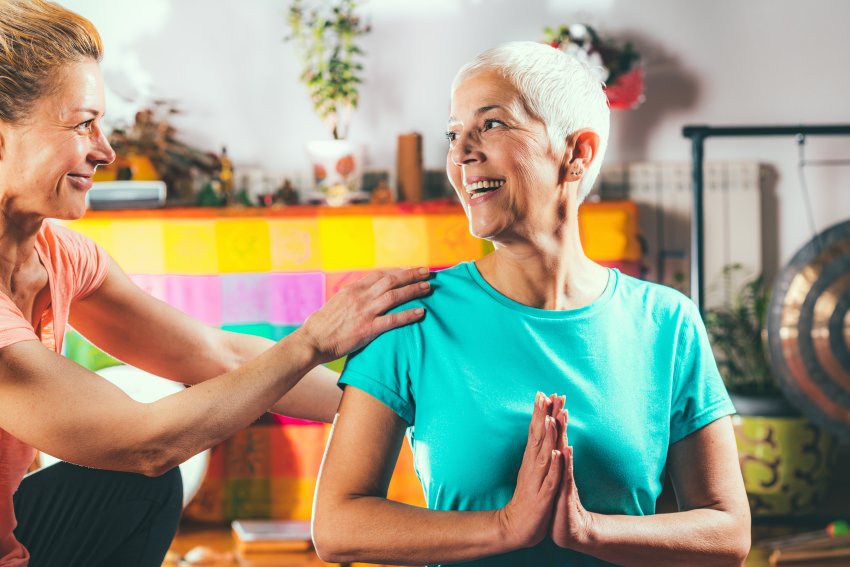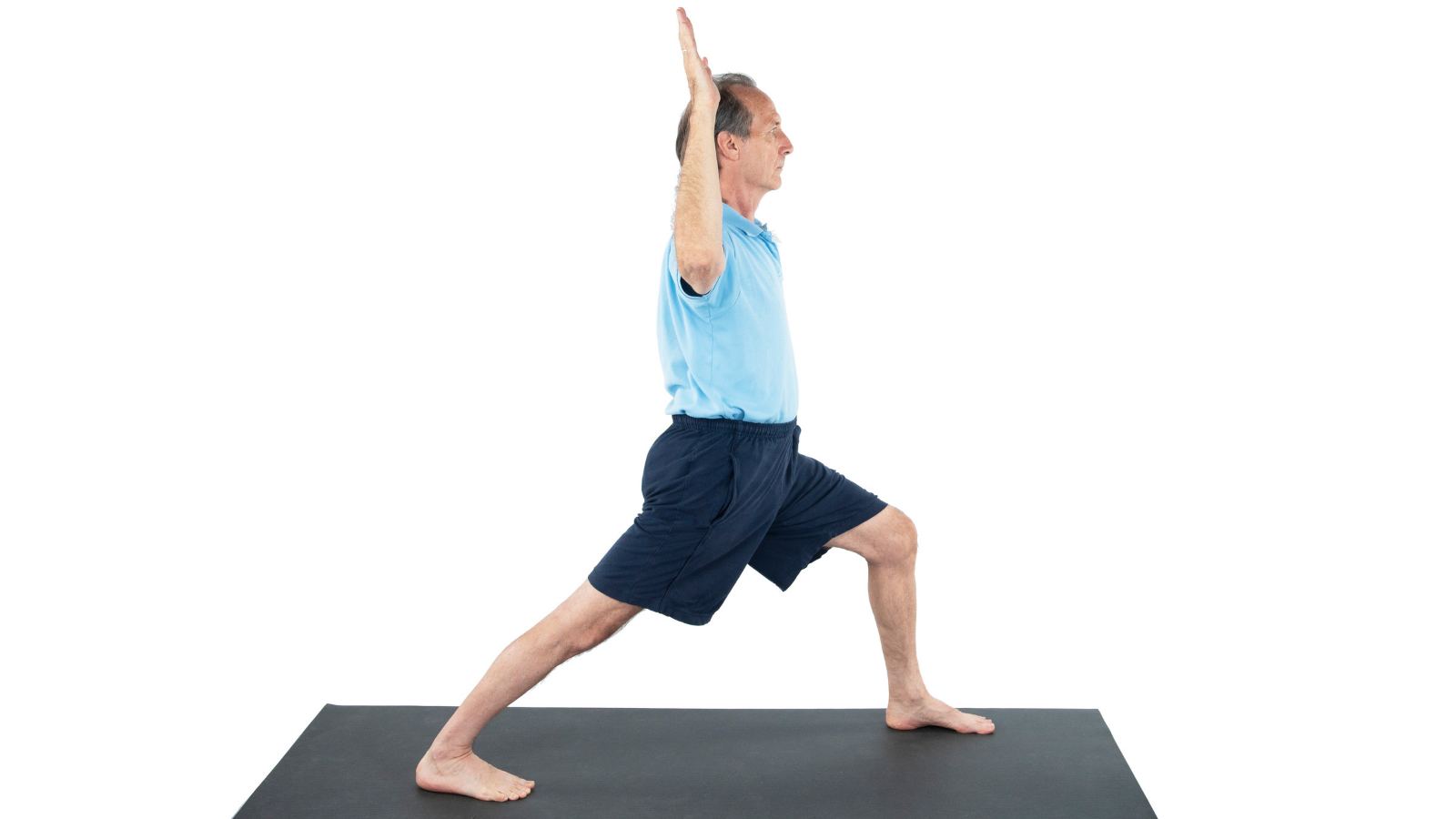View basket (0 items $0.00)

Yoga Improves Memory and Brain Function in Older Adults, Studies Find
Prolonged stress can have a deleterious effect on the brain, reducing your ability to think, plan and reason effectively. This is particularly true for the elderly.
A review article published in Brain Plasticity shows evidence from multiple studies that yoga may have a positive effect on the structure and function of several parts of the brain, including the hippocampus, the area of the brain that plays a major role in memory. (3) This points to yoga as a potential way to slow down age-related decline in memory and lessen the effects of stress on the brain in older adults.
Neuroendocrine research finds that brain exposure to higher concentrations of cortisol – a key marker of stress – increases the risk for cognitive deficits as we age. Chronic stress magnifies this effect, placing undue wear and tear on the brain and the autonomic nervous system, and increasing the risk for disease.
Yoga, which emphasizes mind-body integration, is theorized to attenuate these effects by increasing the relaxation response through activation of the parasympathetic nervous system. This, in turn, decreases cortisol levels and inflammation and returns the mind, body, and brain to a state of balance, which can enhance cognitive functioning.
Study Explores the Effect of Yoga on Memory and Cognitive Function

To test this theory, researchers randomly assigned 118, sedentary, community-dwelling older adults (mean age = 62.02 years) to either an 8-week Hatha yoga intervention (n=61) or a stretching control group (n=57). The majority of study adults were female, married, working full-time, well educated, and moderately affluent. Ethnic minorities comprised 20% of the overall sample. A proportion of the full sample had prior experience with yoga, however, none of the participants currently maintained a regular yoga practice.
Each adult in the study completed an assessment before and after the intervention consisting of self-report questionnaires measuring stress and anxiety. They were then given tests of executive function and asked to provide samples of salivary cortisol.
Members of both groups attended hour-long yoga classes 3 times per week for 8-weeks. Yoga classes were designed for beginners and led by a certified yoga instructor. Classes included “new postures, breathing, and meditative exercises”. Postures included “warrior pose, easy lotus pose, and sun salutations”, whereas breathing exercises included alternate nostril breathing. Meditative components involved focusing on “thoughts, breath and mantra repetitions”. No mention was made of the yoga tradition informing these practices.
The stretching group attended hour-long sessions, 3 times per week for 8-weeks that excluded any form of yoga postures, breathing exercises, or meditative practices. Movements included stretching and strengthening maneuvers that met the Center for Disease Control anaerobic recommendations. Classes included warm-up and cool-down periods, and repetition of 8-10 different exercises taught by a certified personal trainer.
A total of 108 adults completed the study (attrition rate of 8.47%) suggesting that both the yoga and stretching programs were feasible. There were no differences between those who completed the intervention and those who dropped out on any of the baseline demographic or cognitive measures. Participation in the groups was relatively equivalent.
Yoga Reduces Stress and Improves Executive Function
At the conclusion of the 8-week intervention, yoga participants demonstrated less physiological stress (as indicated by lower concentrations of salivary cortisol) than the stretching control group whose salivary cortisol actually increased. The yoga group also reported feeling less stress and anxiety at the end of 8 weeks.
Greater improvements in cognitive functioning at the end of training were also indicated for the yoga group compared to stretching controls. Specifically, yoga participants demonstrated significantly improved working memory capacity and cognitive flexibility relative to the control group. This is particularly encouraging news for older adults, and those experiencing high levels of persistent stress, both of which are at risk for declining cognitive function.
How Yoga Benefits Mental Functioning
 Yoga involves the integration of physical movement with breath awareness and focused attention. Unlike most other disciplines, yoga facilitates neural communication between the brain and body, and the integration of both top-down and bottom-up cognitive processing.
Yoga involves the integration of physical movement with breath awareness and focused attention. Unlike most other disciplines, yoga facilitates neural communication between the brain and body, and the integration of both top-down and bottom-up cognitive processing.
Top-down processing refers to conceptually driven mental events that are influenced by thoughts, expectations, values, and beliefs. When engaging in top-down processing you use existing knowledge and seek out information and experiences that “fill in the blanks”. This allows you to use accumulated knowledge as a frame of reference, rather than figuring out each situation from scratch. It also means that you are better able to regulate emotions such as fear and anxiety.
In bottom-up processing, information from the external environment is filtered through the brain’s emotional circuitry prior to being projected to higher-order “thinking” centers for interpretation. For example, when a pedestrian steps in the path of your car, you slam on the brakes to avert an accident. It isn’t until after an accident has been averted that you interpret the details of the event. Top-down processing allows you to maintain composure while tackling complex problems. Bottom-up processing aids in your immediate survival. Both systems are necessary to maintain a healthy emotional balance.
Yoga is proposed to engage both the top-down and bottom-up systems. By coordinating breath with movement, you become increasingly more aware of the physical and mental events that shape your experience and are better able to focus and sustain attention. Try standing on one foot while solving a complex problem, and you will notice that it is very difficult to do both well. Yoga enables you to train and refine your mental energy and harness it in appropriate ways when you need to.
This ability to integrate mind and body in the service of sustained focus, self-awareness, and mental regulation may be why studies consistently find that practices such as yoga and meditation enhance cognitive capacities and impact the brain networks that enhance our capacity for mindful awareness, self-reflection, emotion regulation, working memory, cognitive flexibility, and other competencies that are key to successful living and healthy aging. In the years to come, we will undoubtedly continue to learn how and why yoga can enable us to thrive throughout our lifespan.
Another article from YogaUOnline and B Grace Bullock, PhD - Yoga and Meditation Boost Brain Function in Aging Adults New Study Shows.
Study with B Grace Bullock, Ph.D. and YogaUOnline - Breathe: Yogic Tools for Happy, Healthy & Fulfilling Relationships.
 B Grace Bullock, Ph.D., E-RYT 500 is a psychologist, research scientist, educator, yoga and mindfulness expert and author of Mindful Relationships: Seven Skills for Success - Integrating the Science of Mind, Body and Brain. Her mission is to reduce stress, increase health and well-being and improve the quality of relationships. She offers classes, workshops, writing and research that combine the wisdom of applied neuroscience, psychophysiology, psychology and contemplative science and practice. Her goal is to empower individuals, groups, leaders and organizations to reduce chronic stress and increase awareness, attention, compassion, mindfulness and effective communication to strengthen relationships, release dysfunctional patterns and unlock new and healthy ways of being. Dr. Bullock is also the Founding Director and Principal Consultant of the International Science & Education Alliance, an organization devoted to exceptional research, program evaluation, assessment design, strategic planning and capacity building to support equity, programmatic diversity and scientific integrity, and promote effective leadership, decision-making and social change. Bullock is a Certified Viniyoga Therapist and Faculty at the Integrated Health Yoga Therapy (IHYT) Training program. She is the former Senior Research Scientist at the Mind & Life Institute and former Editor-in-Chief of the International Journal of Yoga Therapy. For more information see www.bgracebullock.com.
B Grace Bullock, Ph.D., E-RYT 500 is a psychologist, research scientist, educator, yoga and mindfulness expert and author of Mindful Relationships: Seven Skills for Success - Integrating the Science of Mind, Body and Brain. Her mission is to reduce stress, increase health and well-being and improve the quality of relationships. She offers classes, workshops, writing and research that combine the wisdom of applied neuroscience, psychophysiology, psychology and contemplative science and practice. Her goal is to empower individuals, groups, leaders and organizations to reduce chronic stress and increase awareness, attention, compassion, mindfulness and effective communication to strengthen relationships, release dysfunctional patterns and unlock new and healthy ways of being. Dr. Bullock is also the Founding Director and Principal Consultant of the International Science & Education Alliance, an organization devoted to exceptional research, program evaluation, assessment design, strategic planning and capacity building to support equity, programmatic diversity and scientific integrity, and promote effective leadership, decision-making and social change. Bullock is a Certified Viniyoga Therapist and Faculty at the Integrated Health Yoga Therapy (IHYT) Training program. She is the former Senior Research Scientist at the Mind & Life Institute and former Editor-in-Chief of the International Journal of Yoga Therapy. For more information see www.bgracebullock.com.
Sources
1. Gothe, N.P., Kramer, A.F. & McAuley, E. (2014). The effects of an 8-week Hatha Yoga intervention on executive function on older adults. Journals of Gerontology A Biol Sci Med Sci, 69(9), 1109-1116.
2. Gothe, N., Keswani, R.K. & McAuley, E. (2016). Yoga practice improves executive function by attenuating stress levels. Biol Psychol. doi: 10.1016/j.biopsycho.2016.10.010
3. Gothe, N.P., Khan, I., Hayes, J., Erlenbach, E. & Damoiseaux, J.S. (2019). Yoga effects on brain health: A systematic review of the current literature. Brain Plasticity (Amsterdam, Netherlands), 5(1), 105-122. doi: 10.3233/BPL-190084
Featured Courses









